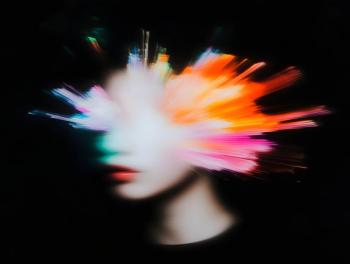
Becoming a Ketamine Assisted Psychotherapist
One psychiatrist recounts his experience with ketamine.
CLINICAL REFLECTIONS
Psychedelics is perhaps the trendiest topic in social psychiatry at present. The number of publications and media references on this matter has skyrocketed over the last few years. Still, most psychedelic treatments are illegal in the United States. Psychiatry’s position on psychedelics is mixed. Many psychiatrists view psychedelic enthusiasm with skepticism; some show serious concern fearing a new hallucinogen epidemic or a threat to the current model of psychiatric care and harmony in society. In contrast, psychedelic enthusiasts see an opportunity in these medicines to offer an alternative model of care in which well-integrated pharmacology, psychotherapy, and spirituality seem to finally piece together.
In parallel with psychedelic enthusiasm, several training opportunities have emerged. Many online modules are available on the internet as well as workshop opportunities. Nonetheless, most of these training modules do not offer an experiential learning. In contrast to regular training experiences in psychiatry, in psychedelics, experiential learning is key in understanding the healing power of the treatment being offered.
This year, Marni, a colleague of mine referred me to a psychedelic experiential training opportunity in Boston, the city where I work and reside. The program is run by a group of experts and facilitators under the name of Psychedelic Therapy Boston. It is formed by therapists and prescribers trained in ketamine assisted psychotherapy (KAP) and MDMA assisted psychotherapy. Most were actively involved in the famous Multidisciplinary Association for Psychedelic Studies (MAPS)
Personal Experience
When I first enrolled with the program, I did not know what to expect. In all my years of training and education, this was the first time in my life that my education involved the ingestion of a mind-altering substance. The location of the training was a yoga studio. On the days prior to our training, each participant had a medical evaluation and were prescribed 3 tablets of 100 mg ketamine lozenges at a compound pharmacy to bring to the training. We had signed an agreement that we would not drive as the training implied ingesting a mind-altering substance.
On my first day of training, my girlfriend gave me a ride to the yoga studio. At the entrance, I was received by Libby, one of the psychologists and facilitators. She gave me a warm welcome and recognized me from the Massachusetts General Hospital (MGH) Psychedelic Conference. At the corridor, I recognized Michael, the facilitating psychiatrist whom I had met at the same conference. Then I saw Jim, another psychologist I had met via zoom a year before and Joanna, the nurse practitioner who did my medical evaluation. Once inside I introduced myself to the lead therapists and organizers, Francis and Robert. Lianna was both a trainee and an organizer and provided us with excellent food supplies from the local bakery and Life Alive. The room had all the elements that characterized a yoga studio: meditating Buddhas, mats and mattresses, blankets, Zen symbols, etc. Everyone seemed excited but somewhat dazed. A gong sound signaled the beginning of the experiential training. Everyone had to introduce themselves and had a chance to show what, in Jungian terminology, we call the persona.
When my turn to speak arrived, I felt anxious. Despite my relative vast experience in public speaking, I was ready to show my vulnerabilities. It would have been easier to just say my profession and something funny but instead I spoke from the heart: “I come from grief and loss, and I am here to learn and heal and grow.” Robert and Francis had created the right atmosphere for that purpose. After a couple lectures with practical and theoretical knowledge, we organized ourselves in couples. On my first day, I was assigned to be in the therapist role. Most talk therapy I had learned in my life involved theory, knowledge, and talking. Here, I felt different: my partner was going to ingest
The following day, it was my turn to enter the nonordinary consciousness state. I felt uneasy that morning. I was not feeling right and feared the substance’s adverse effects. I ingested 100 mg of ketamine. Joanna led with guided
Coincidentally, on the next day I was scheduled to give a talk on ketamine with my friend Franklin at the Interdisciplinary Psychedelic Research Conference at Harvard Divinity School. When it was my turn to speak, I walked to the stage, looked at the full room, paused, and said “I had prepared some slides today, but I am not going to use them. I want to speak from the heart.” I shared my experiential training with the audience and ended with a quote “it may sound cheesy, but I believe love is the answer” and closed my talk to applause. I could feel the energy of each person there. As soon as I finished my talk, I ran back the yoga studio to resume my training. Due to the conference, I was late and was feeling guilty about it. When I entered the studio, the intramuscular (IM) ketamine session had already started. I saw all my training partners in a circle wearing their eyeshades and lying on their mattresses accompanied by their therapists and immediately felt included. Unlike in my conference experience, here I was not the protagonist, I was just 1 more person in the group and it felt right, it felt good. The group is more powerful than the individual. Jim had graciously agreed to cover for me as therapist. I felt privileged, relieved, and softhearted to see Jim providing such a powerful and alluring therapeutic experience to my training partner. That day, psychedelic integration took a higher level. We did not divide the class in 2 groups. We all wanted to be together and learn from each other. For the next 3 hours, we all got an opportunity to talk and share.
Sunday was our last day of training and my time to have an IM ketamine experience. Before the session, I had a conversation with my training partner, who was going to be in the therapist role for me. I was lucky. He was the perfect fit for me. We had similar life experiences, and he was a decade older than me. Unconsciously, I projected myself onto him. I was ready for the journey. Perhaps to lighten the expectation or decrease his potential anxiety, I said that he should not worry much for me as I would go deep inside my mind and would not require much assistance. He said he would have one of the savory rolls from the bakery ready to eat for me once I returned from the trip. Before ketamine, one must fast. The music started. Michael came and shot 80 mg of ketamine in my left shoulder right in the middle of my tattoo with the image Romulus and Remus and the She-Wolf, the foundational myth of Rome. He asked me about my tattoo, and I said “I have an identical twin brother and we both love ancient history. I have it on the left shoulder and he has it on his right shoulder. He is my better half.” Three minutes after the injection, I told my partner “I am feeling it.” I covered my eyes and went down to an abyss. I was in Mexico, surrounded by Aztec pyramids. Then I travelled to the underworld. I would see Aztec symbolism with faces and serpents moving and producing guttural sounds. I was in an obscure place, but I was not scared. I was curious. Perhaps it was an allegory of my shadow.
I grabbed the hand of my therapist who gave me a boost of fuel to skyrocket back to the surface. I was in a red room, and I could see figures and shapes that resembled Islamic structures and Flemish Renaissance windows. I felt good. Then I went to a heavenly like room with a light on the top, as if I was having a near death experience. Again, I felt universal love. I could barely talk but I found the energy to articulate and yell “I love you all.” I heard from someone in the room “We love you too, Fernando.” My message had settled.
Then I heard the song “On the Nature of Day Light” by Max Richter. That song evoked my feelings about a past relationship. After the breakup, I had moved to Boston in the midst of COVID pandemic, where I had experienced profound loneliness. I felt grief, then I started to return from the trip and was able to speak more easily. With my eyeshades on, I engaged my therapist in conversation. I said: “I am an immigrant.” In psychedelic experiences, you never know what will be presented to you, but it is recommended to remain open to it. I was surprised that my immigrant experience came up. I continued talking to my therapist who was holding my hand tighter. “As an
When I returned to normal consciousness, the whole group gathered in a circle for integration. We were sitting on mattresses, and pillows on the floor. Some had experienced lots of joy and fun. Some were still confused. Others had re-experienced grief, hopelessness, or despair. We all had grown. We were happy to be back. No one had been left untouched. Then, we celebrated the first day of spring by going outside and enjoying the sunlight. When we came back to the studio, we all danced together. It was exhilarating. We made an email list; we exchanged contacts and hugs. The time to return to our ordinary lives had arrived but now we were different. We had been somewhere else and had returned filtered, purged, improved. We had known each other only for 4 days but we felt very close. This experience had brought us together.
Concluding Thoughts
Weeks after my training, I am still carrying my transformational experience and feel privileged to have had the opportunity to do it with the support of this group of compassionate and caring experts in the field. I have spent a great deal of my life thinking about the meaning of existing. We live on a small rocket planet in the solar system of 1 galaxy among billions. With perspective, our existence may seem insignificant. Our most likely outcome as a species is extinction. For many years, I always found relief in nihilism as it freed me from responsibilities in this world. However, psychedelics have taught me otherwise: We are not alone. We have each other.
Dr Espi Forcen is founder of
Reference
1. Dore J, Turnipseed B, Dwyer S, et al.
Newsletter
Receive trusted psychiatric news, expert analysis, and clinical insights — subscribe today to support your practice and your patients.













